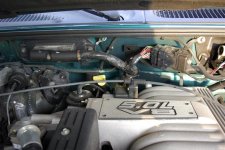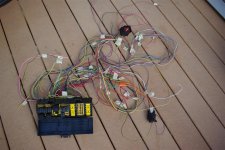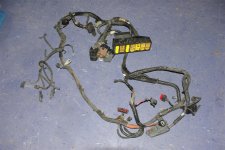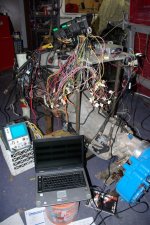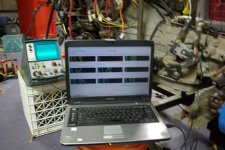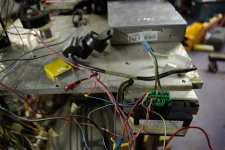- Joined
- Aug 25, 2006
- Messages
- 2,262
I'm starting this thread to document on going work and share information as I go. I know that these conversions have been done but there is not much information available.
I found a 2000 5.0L/4R70W AWD Explorer with a clean engine and 101,000 miles.
Update: Pulled the plugs and they looked like 101,000 miles but were very uniform in the burn color for a healthy engine. Cold compression was 135 on every cylinder at 8 revolutions. Very uniform. This is one reason to choose these newer engine that ended up in the salvage yard due to closisions.
I got the engine, transmission, computer, harness, and all of the other parts that might be needed for $500 + tax. I had been looking for a AWD without active suspension to keep things simple(r). AWD and 2WD to not have all of the traction and shift control functions that exist in the 4WD versions.
Update: It appears that all of the transfer case shift functions in the 4WD Expolrers are handled by the GEM (Generic Electronic Module) which doesn't effect the PCM and it shift functions of the 4R70W. That module is not being used so it shouldn't matter if the donor is a 2WD AWD or 4WD. Active suspension should not present and complications either. I won't be able to absolutely verify that without actually going through a 4WD. Using the Explorer electronic transfer case would be a bit of a challenge. The GEM uses inputs from the front and rear ABS speed sensors and monitors several other functions to control shifting a traction control. The good news its that it doesnt effect the PCM.
I'm using Alldata as my source for the electrical diagrams etc. Very complete information but it takes a little while to find your way around.
I'll post and edit entires as I systematically go through the process.
Please feel free to add any helpfull information.
Thanks, Dave...
I found a 2000 5.0L/4R70W AWD Explorer with a clean engine and 101,000 miles.
Update: Pulled the plugs and they looked like 101,000 miles but were very uniform in the burn color for a healthy engine. Cold compression was 135 on every cylinder at 8 revolutions. Very uniform. This is one reason to choose these newer engine that ended up in the salvage yard due to closisions.
I got the engine, transmission, computer, harness, and all of the other parts that might be needed for $500 + tax. I had been looking for a AWD without active suspension to keep things simple(r). AWD and 2WD to not have all of the traction and shift control functions that exist in the 4WD versions.
Update: It appears that all of the transfer case shift functions in the 4WD Expolrers are handled by the GEM (Generic Electronic Module) which doesn't effect the PCM and it shift functions of the 4R70W. That module is not being used so it shouldn't matter if the donor is a 2WD AWD or 4WD. Active suspension should not present and complications either. I won't be able to absolutely verify that without actually going through a 4WD. Using the Explorer electronic transfer case would be a bit of a challenge. The GEM uses inputs from the front and rear ABS speed sensors and monitors several other functions to control shifting a traction control. The good news its that it doesnt effect the PCM.
I'm using Alldata as my source for the electrical diagrams etc. Very complete information but it takes a little while to find your way around.
I'll post and edit entires as I systematically go through the process.
Please feel free to add any helpfull information.
Thanks, Dave...
Last edited:












